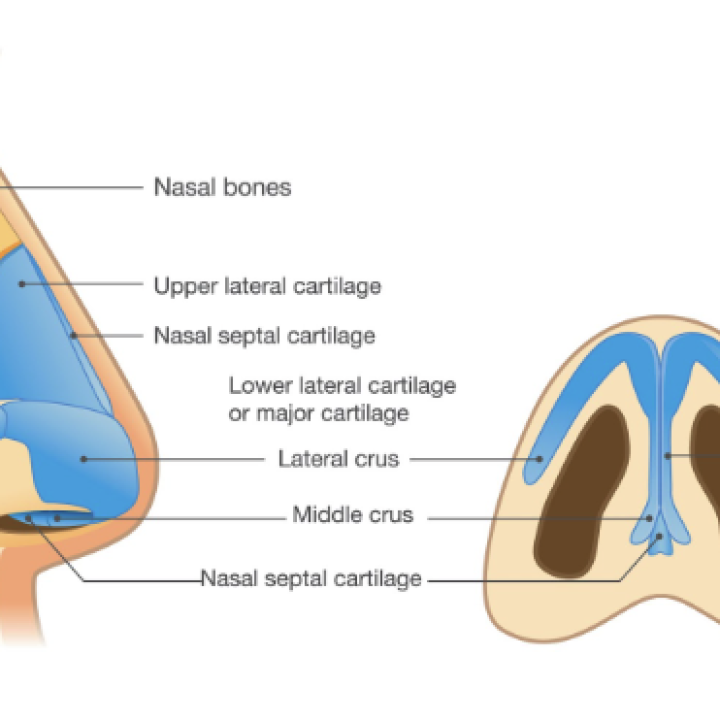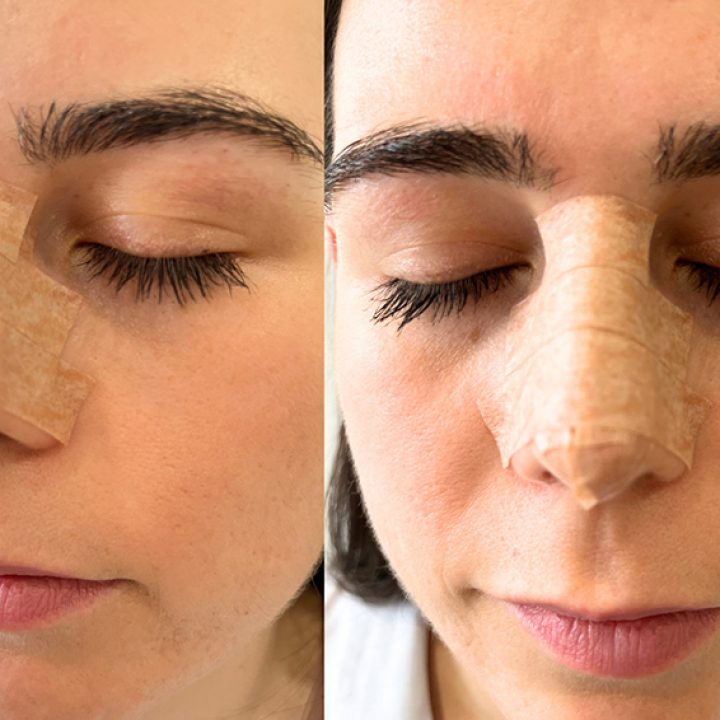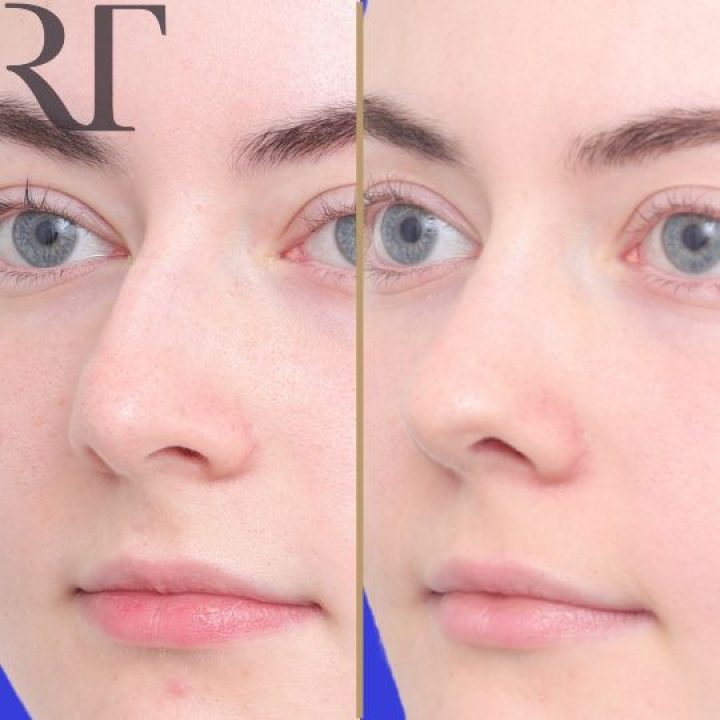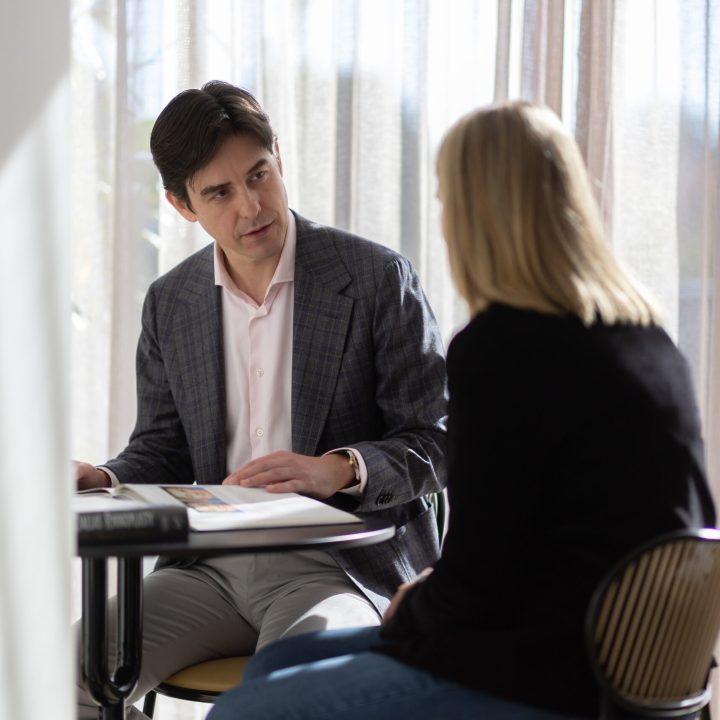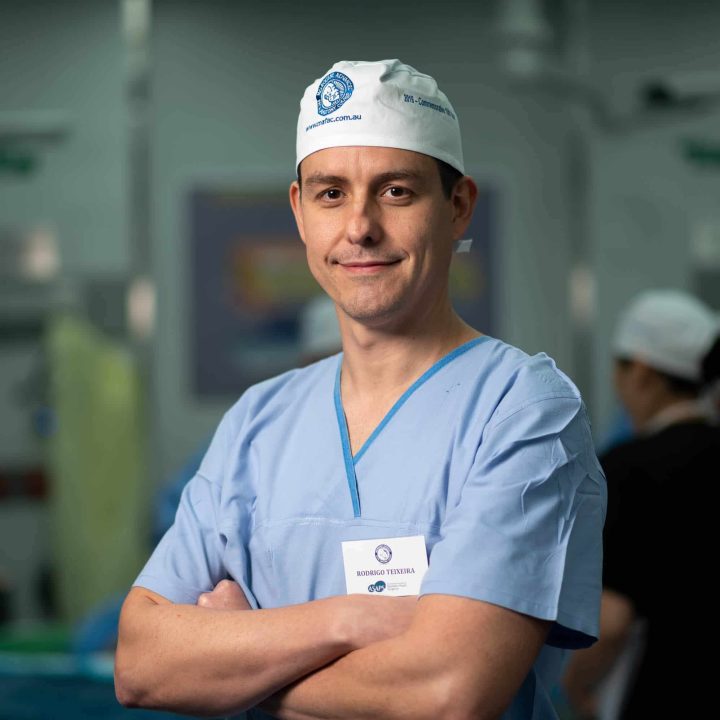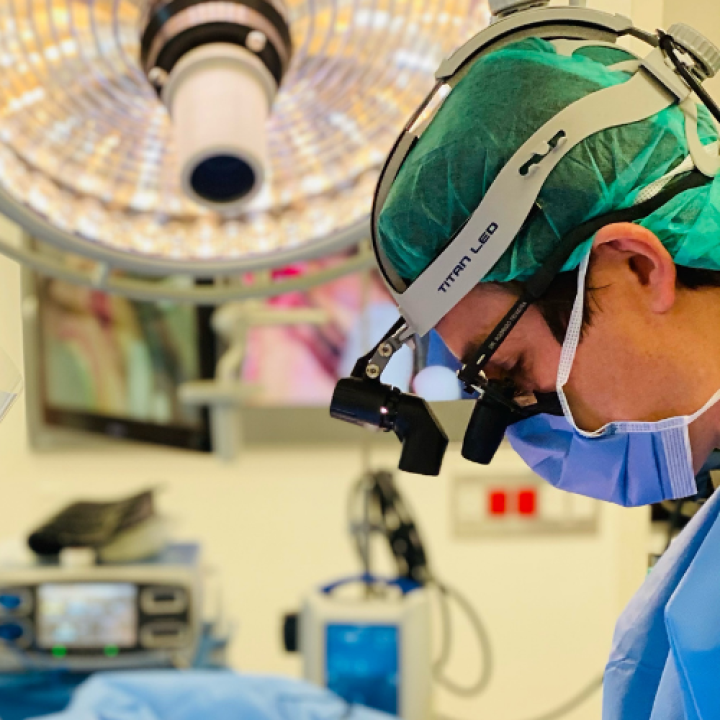Rhinoplasty in Melbourne - Nose Reshaping Surgery
Dr Rodrigo Teixeira is a Specialist Plastic Surgeon (FRACS) offering rhinoplasty, facelift, and blepharoplasty in Melbourne. He takes a tailored approach to both cosmetic and functional rhinoplasty, performing primary and revision surgeries with open structural techniques to create stable support and balanced proportions.
Why Rhinoplasty May be Considered?
Rhinoplasty, also known as nose reshaping surgery or “nose job”, is performed to adjust the size, shape, or contour of the nose. Some patients seek cosmetic refinement, while others need correction of structural problems such as a deviated septum, nasal valve collapse, or airway obstruction.
Nose surgery may also be appropriate following nasal trauma or as revision rhinoplasty surgery after a previous procedure. In many cases, cosmetic and functional rhinoplasty goals overlap, with surgery addressing both appearance and breathing concerns at the same time.
Dr Rodrigo Teixeira performs rhinoplasty in Melbourne using open structural techniques aimed to providing stable nasal support, balanced proportions, and improved airway function. His practice includes primary rhinoplasty, including cosmetic rhinoplasty, complex reconstruction, revision procedures, and cases where both function and aesthetics need to be managed together.
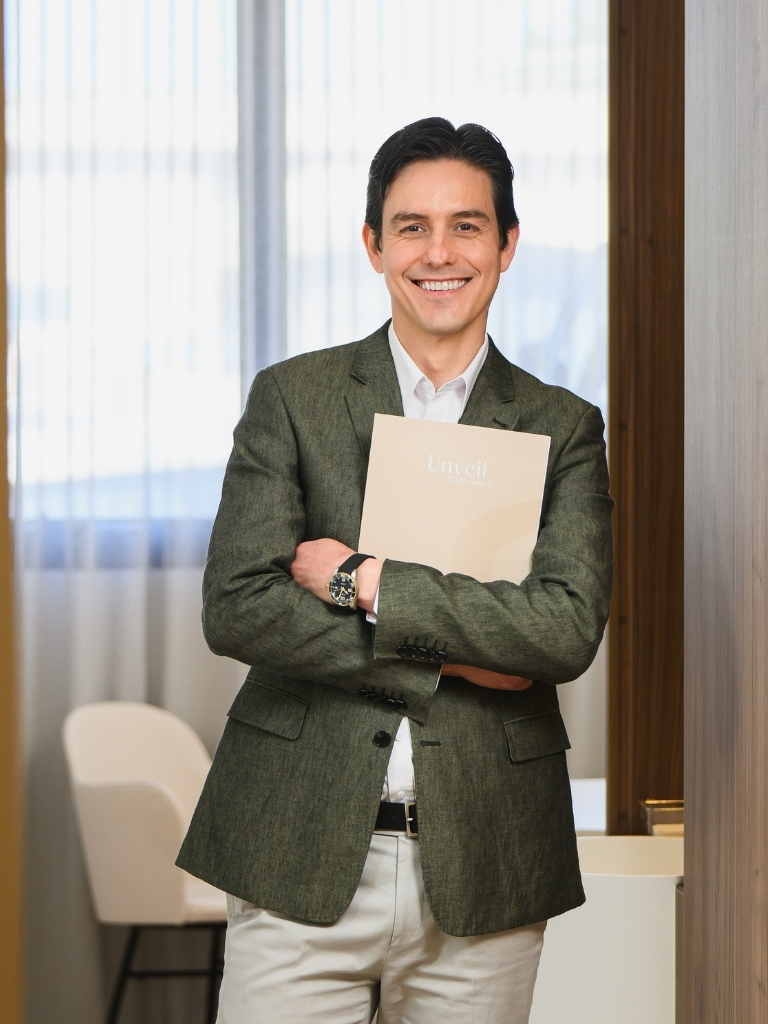
Learn more about Dr Rodrigo Teixeira and his approach to plastic surgery and patient care.
Types of Rhinoplasty Procedures
If you’re considering rhinoplasty, it can be helpful to understand the different types of procedures available and how they may apply to your unique needs. Whether you’re exploring surgery for cosmetic reasons, to improve breathing, or to revise a previous operation, Dr Rodrigo Teixeira takes a personalised approach guided by anatomy, goals, and safety. He also uses the piezotome device, also referred to as ultrasonic rhinoplasty, the piezotome allows more controlled bony reshaping and may reduce trauma to surrounding tissues when compared with traditional methods.
Cosmetic Rhinoplasty
If you’re thinking about altering the shape or proportions of your nose and don’t have significant breathing concerns, cosmetic rhinoplasty may be a surgical option to explore. The focus is on reshaping the nose and refining features such as a prominent bump, a drooping or under-projected tip, or overall asymmetry. Facial balance is an important part of the planning process, with the aim of achieving a nose that looks natural, suits your individual features, and aligns with your preferences; while maintaining or supporting nasal function.
Functional Rhinoplasty and Septoplasty
Functional rhinoplasty, sometimes called nasal airway surgery, focuses on improving breathing while maintaining or restoring the nose’s external appearance. It is often performed to correct structural issues such as a deviated septum, nasal valve collapse, or weak airway support. Septoplasty may also be included as part of this procedure, allowing both functional and cosmetic concerns to be managed together.
Rhinoplasty after Non-Surgical Nose Reshaping
Some patients try non-surgical rhinoplasty as a first step to refine nasal shape or contour. While it can provide temporary changes, it does not address complex issues that require structural correction. Repeated treatments may also lead to rising costs and diminishing returns over time. For these reasons, some patients later consider surgery as a more definitive option. In certain cases, treatment to dissolve previous injectable products is required before surgical planning.
Revision Rhinoplasty (Secondary Rhinoplasty)
Revision rhinoplasty is performed to improve or correct the results of a previous nose surgery. It may involve small refinements, such as smoothing irregularities or improving tip definition, or more complex reconstruction when structural support has been weakened. These procedures often require cartilage grafting and detailed planning. As a Specialist Plastic Surgeon (FRACS) with experience in revision rhinoplasty, Dr Rodrigo Teixeira places strong emphasis on understanding each patient’s surgical history and goals before recommending further surgery.
Ethnic Rhinoplasty
Ethnic rhinoplasty refers to nose reshaping procedures that consider the patient’s ethnicity and unique anatomical features. The aim is to address functional or cosmetic concerns while maintaining facial harmony. Dr Rodrigo Teixeira has experience in tailoring rhinoplasty to different ethnic profiles.
Cleft and Reconstructive Rhinoplasty
Cleft rhinoplasty is performed to correct nasal asymmetry and structural imbalance associated with cleft lip and palate. These procedures often require advanced structural support to restore both contour and function. Reconstructive rhinoplasty may also be considered after trauma, previous surgery, or congenital differences that have altered nasal shape or function. Such cases are highly individualised and demand detailed anatomical understanding and careful surgical planning.
Surgical Approach and Techniques
Structural Open Rhinoplasty
Rhinoplasty is a technically complex procedure that requires precision, careful planning, and sound judgement. Dr Rodrigo Teixeira approaches each case with care and integrity, balancing cosmetic refinement with functional improvement while considering the patient’s anatomy, skin characteristics, and overall facial proportions. He most often performs structural open rhinoplasty, which provides direct visibility and allows precise adjustment of cartilage and bone. Where suitable, elements of preservation rhinoplasty may be incorporated to maintain natural support and minimise disruption to nasal architecture.
Patient-Centred Advice and Realistic Expectations
Dr Teixeira provides clear, evidence-based advice to help patients make informed decisions aligned with their needs, anatomy, and long-term wellbeing. Genuine motivation and realistic expectations are essential. Each plan is designed to aim for results that are natural in appearance and balanced with the rest of the face. When certain requests are not achievable or appropriate, Dr Teixeira explains these limitations openly, recommending alternatives that best support the patient’s health and safety. This transparent approach ensures ethical care and supports long-term satisfaction.
What to Expect During the Consultation
A rhinoplasty consultation begins with a referral from your general practitioner or medical specialist. Once the referral is received, you can contact our Melbourne clinic to schedule an appointment with Dr Rodrigo Teixeira, Specialist Plastic Surgeon (FRACS).
During your first visit, Dr Teixeira will discuss your goals, review your medical and surgical history, and examine your nasal structure, airflow, skin quality and facial balance. Clinical photographs are taken to assist with planning, and you may be asked to complete a Body Dysmorphic Disorder (BDD) screening questionnaire in line with AHPRA requirements. You’ll have the opportunity to talk through your concerns and expectations. Dr Teixeira will explain the procedure’s potential benefits, risks and limitations to support informed decision-making.
A second consultation is arranged to review your surgical plan, anaesthetic approach, hospital details and recovery timeline. In accordance with the Medical Board of Australia’s cosmetic surgery guidelines, a minimum seven-day cooling-off period follows before surgery can be booked. After confirmation, you’ll receive written post-operative information and contact details for ongoing support.
For further details on preparing for your visit, see our consultation process page.
Vectra 3D imaging
Where suitable, Vectra 3D photography and computer simulation may be used to visualise possible changes. These simulations are educational tools only, actual results vary depending on anatomy and healing.
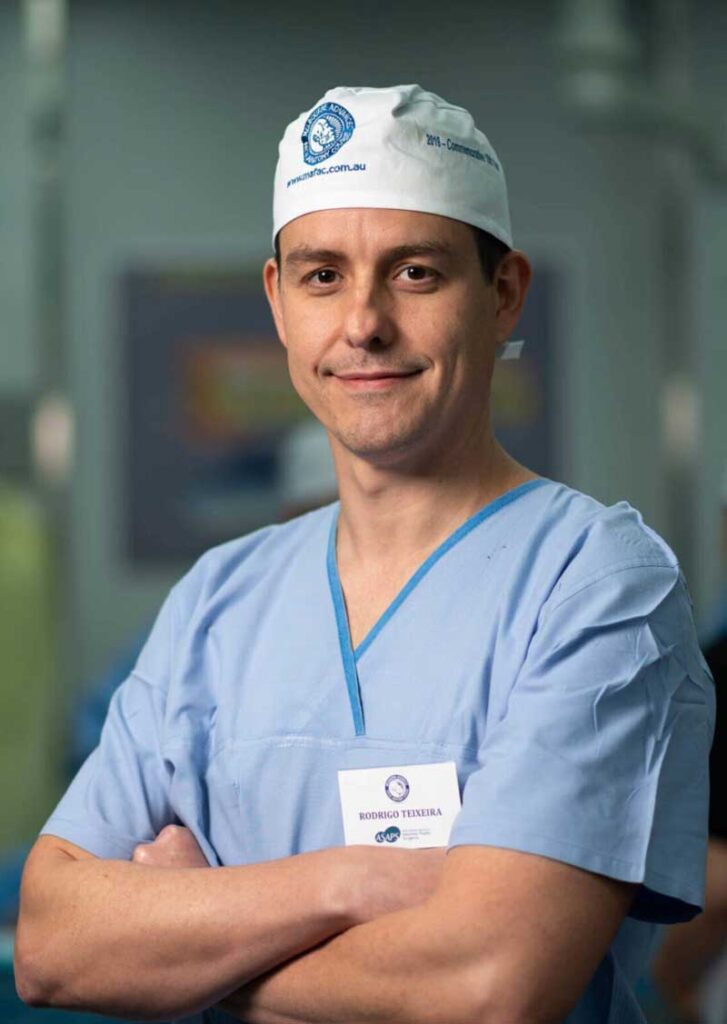
Risks and Considerations
Like all surgical procedures, rhinoplasty carries potential risks. These vary depending on an individual’s anatomy, medical history, and the extent of surgery. Outcomes also differ between patients due to natural variation in healing and tissue response, which cannot be fully predicted. While rhinoplasty aims to improve appearance and/or function, specific results cannot be guaranteed.
Potential risks include bleeding, infection, visible or internal scarring, prolonged swelling, changes in skin sensation, nasal asymmetry, contour irregularities, or breathing difficulties. In some cases, revision surgery may be required, as healing outcomes can vary and certain issues may persist or develop over time. During your consultation, Dr Rodrigo Teixeira will discuss the risks relevant to your situation, provide written information, and support informed decision-making to ensure expectations are realistic and well understood.
Rhinoplasty in Teenagers and Young Adults
Rhinoplasty in teenagers should be considered only after facial growth is complete and emotional readiness is assessed, usually around 18 years of age though this varies. Cosmetic rhinoplasty is not recommended under 18 unless there is a clear medical need. In Australia, AHPRA and Medical Board guidelines, require that patients under 18 must undergo a psychological evaluation, observe a three-month cooling-off period, and attend consultations with a parent or guardian who provides written consent. In our practice psychological assessment is also advised for young adults under 21 or for those with a history of mental health concerns. These safeguards ensure that rhinoplasty is appropriate, safe, and in the patient’s best long-term interests.
Recovery & Aftercare
Rhinoplasty in Melbourne is usually performed under general anaesthesia and takes about three hours, depending on the complexity of the case. After surgery, Dr Rodrigo Teixeira provides detailed post-operative instructions to guide your recovery. In the first days, swelling, bruising, and nasal congestion are expected and generally improve over two weeks. Most patients return to normal activities within two to three weeks, although mild swelling, especially at the nasal tip, may take several months to resolve fully.
Aftercare tips:
- Keep your head elevated when resting or sleeping to help reduce swelling
- Apply cold compresses as directed to manage bruising and discomfort
- Avoid pressure on the nose, including wearing glasses, for several weeks
- Refrain from strenuous activity, heavy lifting, and intense exercise during early healing
- Do not blow your nose, and sneeze with your mouth open to reduce pressure
- Follow all wound care and skincare instructions provided
- Maintain hydration and eat a balanced diet to support recovery
Scheduled follow-up appointments are important so that Dr Teixeira and his team can monitor your recovery and address any concerns. Visible improvements are often seen within the first few months, but final results typically take 6 to 12 months to develop as swelling subsides and tissues settle.
Our Melbourne Clinic
Unveil Aesthetics and Plastic Surgery is located in the heart of Ivanhoe East, just 10 kilometres from Melbourne’s CBD. Our boutique clinic on Lower Heidelberg Road offers a calm, welcoming environment designed for comfort, privacy, and discretion.
When you arrive, you’ll be greeted by our reception team and guided through a supportive experience tailored to your needs. Whether you’re attending a consultation or undergoing treatment, we aim to provide personalised care at every step. Our clinic is equipped with modern consultation spaces and is easily accessible with convenient parking nearby.
We understand that deciding to undergo rhinoplasty is a deeply personal process. Our team is here to provide clarity, reassurance, and trusted guidance throughout your journey, from first enquiry to follow-up care.
FAQs about Rhinoplasty
Open rhinoplasty provides direct access and visibility, especially for structural issues. Closed techniques may be suitable for minor adjustments. Dr Teixeira will recommend the best approach for your goals.
Yes. Functional rhinoplasty can correct structural issues such as a deviated septum or nasal valve collapse to improve airflow.
Planning takes into account your goals as well as your anatomy. The aim is to create a natural-looking nose that aligns with your preferences, supports function, and sits in balance with your facial features.
Rhinoplasty costs in Melbourne generally range from $10,000 to $45,000, depending on the procedure’s complexity, the need for structural correction, and whether it is a first-time or revision surgery. Cases involving trauma or significant reconstruction may incur higher fees. A detailed, personalised quote is provided following consultation.
Functional or reconstructive rhinoplasty may be eligible for a Medicare rebate if strict criteria are met, such as airway obstruction with a NOSE Scale score above 45, or a significant acquired, congenital, or developmental deformity, supported by clinical notes and photographic documentation. Private health insurance may also contribute to costs, depending on your level of cover and whether the procedure is medically necessary.
Pain is usually most noticeable during the first 2–3 days and then gradually improves. Many patients describe it as pressure or discomfort rather than sharp pain, though individual experiences vary. Swelling and congestion are common and managed with medication, head elevation, and cold compresses. Dr Teixeira also offers Hilotherm cooling therapy to support comfort during recovery.
Swelling is most noticeable during the first one to two weeks and gradually subsides over the following months. The nose continues to refine over six to twelve months as tissues settle, particularly at the nasal tip. In patients with thicker skin, swelling may take longer to resolve, and small steroid injections may occasionally be used to help manage persistent swelling or internal scar tissue.
Light walking is usually encouraged within the first few days after surgery. Most patients can return to low-impact exercise by two to three weeks, but contact sports, heavy lifting, and activities that risk trauma to the nose should be avoided for at least six weeks.
Hilotherm is a cooling system that delivers consistent cold therapy through a facial mask to reduce swelling and bruising after rhinoplasty. Offered by Dr Teixeira as part of post-operative care, it supports comfort and recovery.
